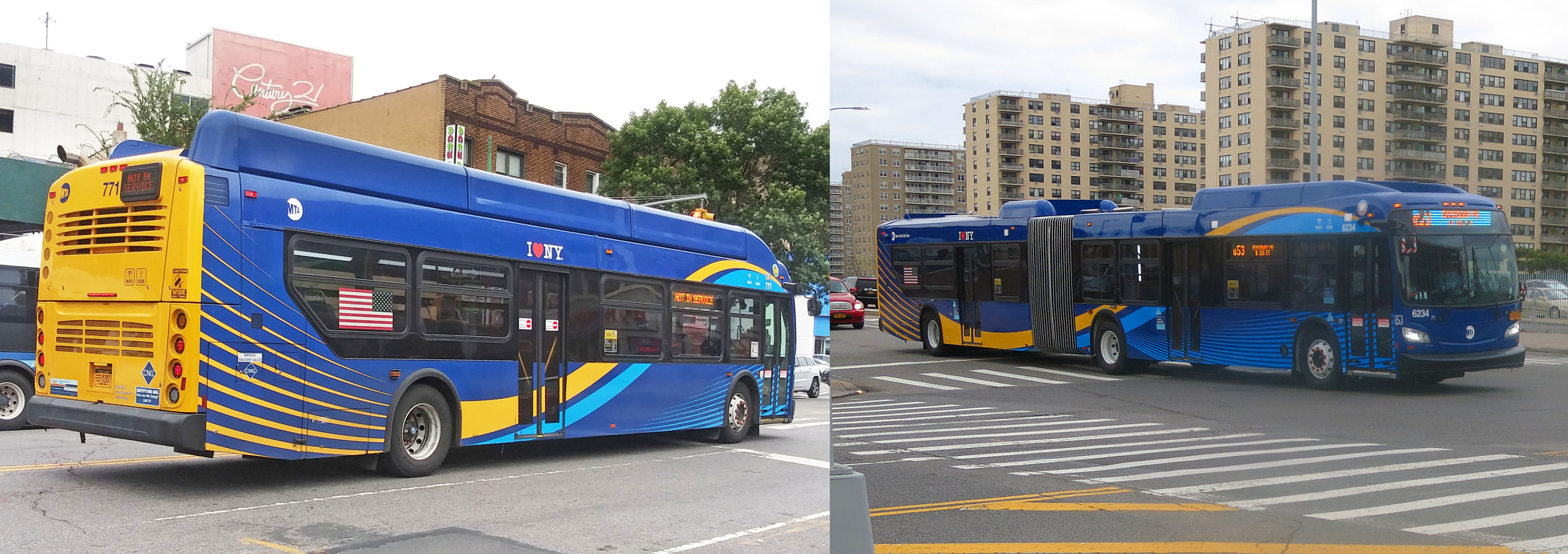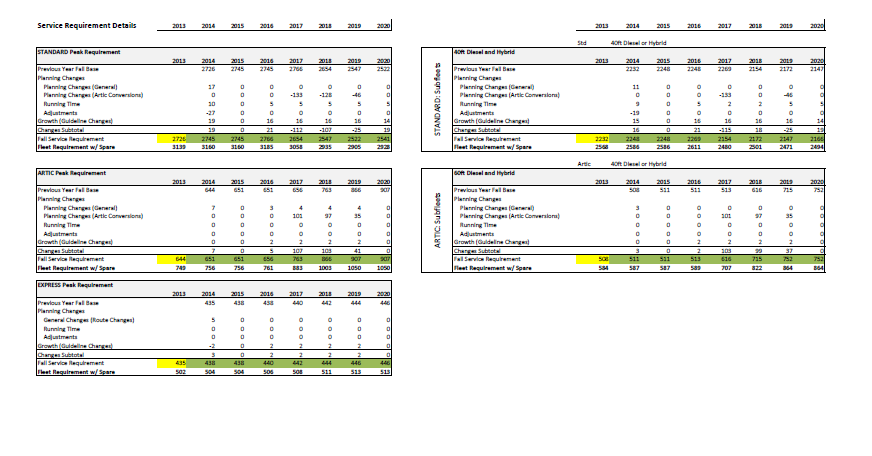
Under Mr. Irick’s management, we created a bus fleet investment plan for two bus systems that had large and diversified fleets, with differences in bus fleet types and propulsion. One system had 4,500 buses and another with 1,200 buses. The fleet featured 40-foot standard buses, 45-foot express buses, 60-foot articulated buses, as well as buses running with diesel, hybrid diesel-electric and natural gas propulsion. Each of these fleet size and propulsion types had their unique depot assignment and capability requirements.
To address the above issues, we prepared systematic step-by-step spreadsheet models for 20-year bus needs forecasts, plus annual forecasts for year-by-year forecasts. The forecast then took into account multiple factors which are common to most transit agencies considering long term fleet investments including:
We prepared the spreadsheet model and then trained an entry-level analyst to prepare the model execution and detailed user documentation as well as the executive communication to make this procedure the agency’s policy.
These forecasts systematized and rigorously structured both transit systems’ approach to capital investment planning. In addition, the employee trained in the use of this model was rapidly promoted from entry level into the executive office of bus operations, and is currently supporting senior management.
